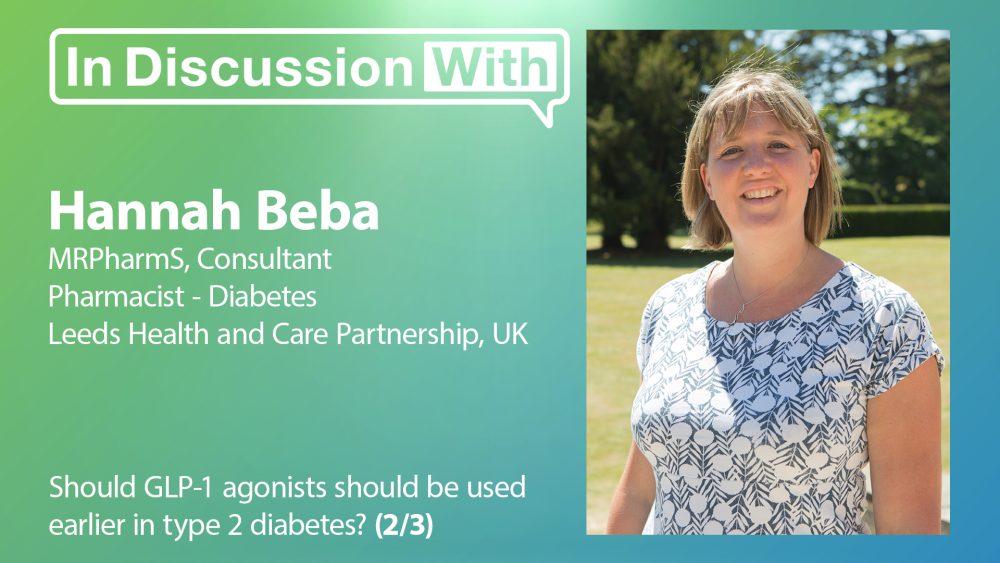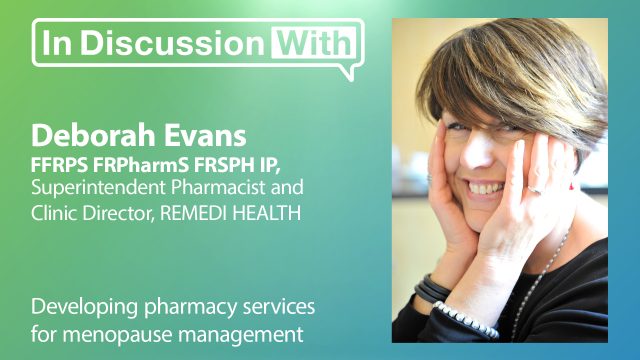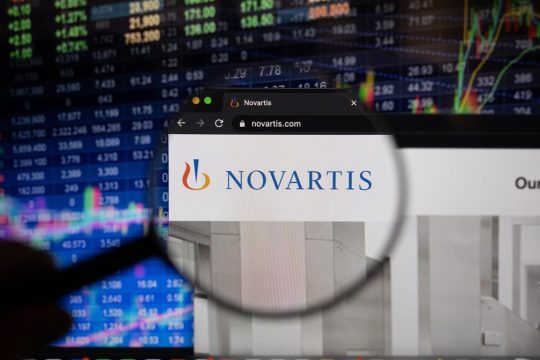Advertisment
Should GLP-1 agonists should be used earlier in type 2 diabetes?

In the future, GLP-1 agonists could be used early in treatment for type II diabetes and this could have an important impact on slowing the onset of complications, according to Hannah Beba, Consultant Pharmacist in Diabetes, Leeds Health and Care Partnership.
GLP-1 receptor agonists (GLP-1RAs) are already well-established in diabetes care pathways. “The main attraction, I suppose, so far with the GLP-1s that are already on the market is that they’ve got good outcome data – so there’s data around not just the weight loss and the HbA1c-lowering but specifically around protection for cardiovascular events”, says Ms Beba. “People with type II diabetes have a very high cardiovascular risk and some of them have already had cardiovascular events. We need to protect them from having further events or from having their first event ……. and these drugs are very efficacious for doing that. So, they’ve got a good outcome data to show that you’re less likely to go on and have a further event and that you’re less likely, if you have an event, to die from that event”, she continues. SGLT2 inhibitors are also associated with good cardiovascular outcomes but GLP-1RAs offer additional benefits in terms of stroke prevention. “The GLP-1s kind of come into their own around around stroke”, she adds.
The GLP-1RAs that have been launched so far are all peptides that have to be injected in order to exert their effects. The one exception is Rybelsus which contains semaglutide co-formulated with the absorption enhancer N-(8-[2-hydroxylbenzoyl] amino) caprylate (SNAC). “It was really nice to have an oral option – there are people who are needle-phobic or they really are very resistant to starting an injectable therapy and so with the oral agent it gives you this option”, says Ms Beba. However, in order for Rybelsus to be effective, the administration instructions need to be followed carefully. This means taking the drug at least 30 minutes before any other oral medicines or food. Ms Beba acknowledges that patients may not always follow the instructions to the letter and so an oral GLP-1RA that did not come with elaborate dosing instructions would be welcome. Orforglipron is just such a product, although it is still in the early stages of development. “We’ve got a whole cohort of people who really would rather not be on an injectable therapy…….. Some of them have relatives who have been on insulin had very traumatic experiences around insulin admin and particularly if it’s been a parent or a grandparent where they’ve been on, like ……. massive needles with their insulin……. So you can buy some time for them, I suppose, in the sense that this will give us something which is efficacious without needing to go on to insulin or needing to go on to injectable GLP-1. It’s almost like another step for me”, says Ms Beba.
Frontline practitioners – pharmacists, nurse and GPs – should now be explaining the breadth of benefits associated with GLP-1RA use. There tends to be a degree of clinical inertia in practice and that means allowing patients to continue with raised HbA1c levels and weight gain for relatively long periods. “I appreciate that it’s all about the holistic management of somebody and we do need to put in lifestyle and dietary advice but there are circumstances where if somebody’s [got] a high or very high cardiovascular risk and a high HbA1c, we do need to action something relatively quickly. Time is heart, it’s kidney, it’s eyes. It’s all of these things and you know when you’re not doing something damage is happening”, she says.
Ms Beba acknowledges that, for some patients, diet and lifestyle interventions are the logical first step. “We’ve got the remission program now at our disposal which {means that] within five years of diagnosis we can refer people to remission so there are there are some more efficacious, more intensive lifestyle options as well that would be certainly something that I would pursue for my younger people living with type 2 most certainly, in that very short window from diagnosis”, she says. However, some people will have more advanced disease and need more aggressive treatment: “We still need to be doing something and highlighting, certainly, the cardiovascular benefits and the protection to your kidneys. ….If they’ve got albuminuria, then you know – “time is kidney”. At that point …. you need to be doing as much as you possibly can to protect those kidneys”, she says.
There is also a need to ensure that frontline practitioners are themselves comfortable and familiar with this information so that they can “get that across effectively to people living with diabetes” and help them to obtain “the [treatments] that they need to be on”, she adds.
About Hannah Beba
Hannah Beba is a consultant pharmacist in diabetes at Leeds Health and Care Partnership. Her clinical work involves care of patients with complex type II diabetes in community services, GP practices and primary care networks. She also has senior leadership roles; she chairs the Cardio-renal Metabolic Expert Working Group and the Diabetes Steering Group, both of which feed into the Long-term Conditions Board.
Read and watch the full series on our website or on YouTube.





